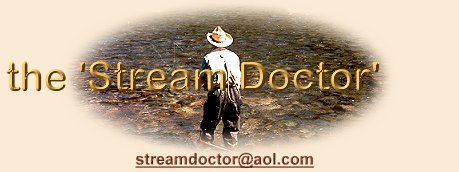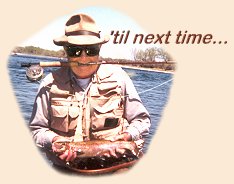
| ||
|
January 27th, 2003 Your questions and answers about everything stream related.
|
|
Q. From Bruce in Wisconsin...I saw a pyramid, once, showing that there were more pounds of ants per square mile, than grizzly bears, in a given area where grizzlies lived. Do stream habitats follow that kind of pyramid, with more pounds of mayflies per mile, than trout, for example?
A.
The answer to your question is "yes," with qualifications.
Let me explain. The general pyramid scheme you refer to holds
true as long as you are making broad classifications of the
organisms in the pyramid. For instance, if you use the
classifications of plants, herbivores, carnivores, the pyramid
exists whether you base it on numbers, weights, or even calories
of energy. Where the pyramid generalization starts to break
down is when you start breaking up these classifications into
their constituents, e.g., the different kinds of plants (algae,
vascular plants), or even further into the different species.
Or breaking down the herbivores into all the different insects
and other macroinvertebrates that feed on plants in different
ways. Then, when you start listing these, and drawing arrows
connecting who feeds on what, you come up with a food-web,
rather than a simple pyramid. Both can be accurate; one just tells
you more about how the individual parts of the ecosystem fit
together.
~ C. E. (Bert) Cushing, aka Streamdoctor
|
| If you would like to comment on this or any other article please feel free to post your views on the FAOL Bulletin Board! |
 The 'Stream Doctor' is a retired professional stream ecologist and
author, now living in the West and spending way too much time
fly-fishing. You are invited to submit questions relating to
anything stream related directly to him for use in this Q & A Feature
at
The 'Stream Doctor' is a retired professional stream ecologist and
author, now living in the West and spending way too much time
fly-fishing. You are invited to submit questions relating to
anything stream related directly to him for use in this Q & A Feature
at